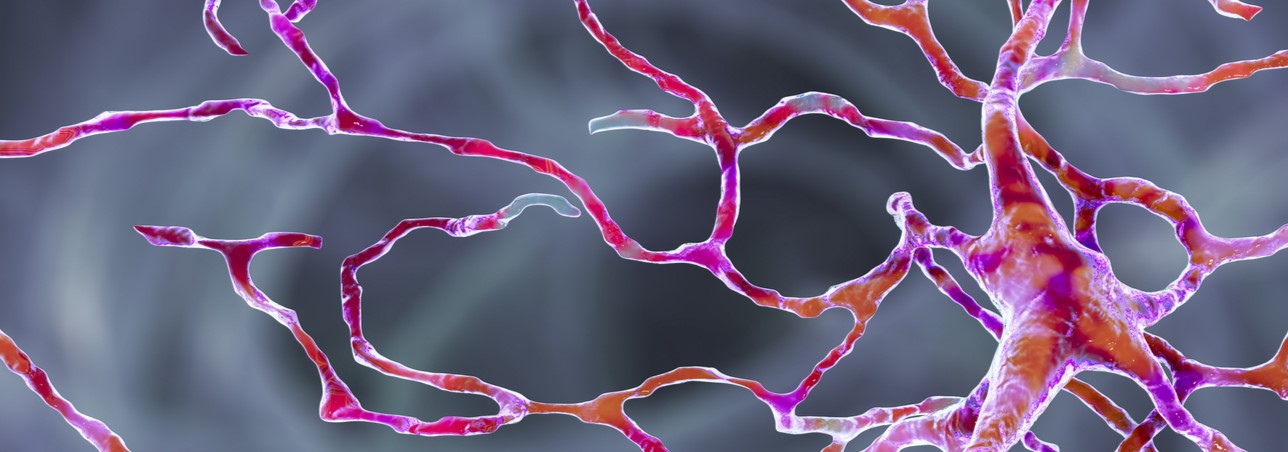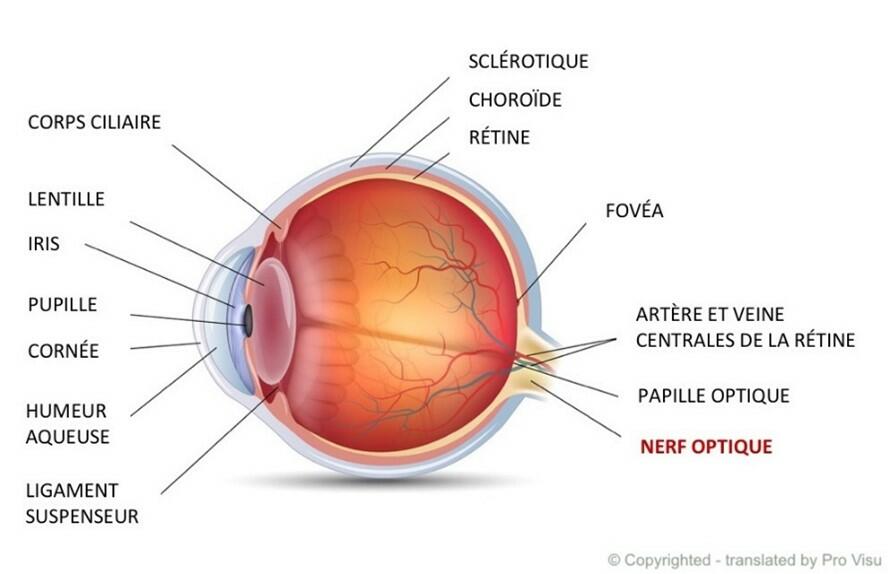Diseases
Posterior Ischaemic Optic Neuropathy (NOIA)

Other terms
- Optic nerve infarction
Definition
The optic nerve extends from the eye socket, carrying visual signals to the brain via millions of neuronal fibers. When the optic nerve is affected, we speak of optic neuropathies, a group of diseases affecting the optic nerve. The most common is glaucoma. Other optic neuropathies include optic neuritis, which is an inflammation of the optic nerve, and ischemic optic neuropathies, which are diseases that disrupt blood flow to the optic nerve, often causing irreversible damage.
A distinction is made between anterior ischemic optic neuropathy, in which the optic disc (the head of the optic nerve) is affected, and posterior ischemic optic neuropathy, in which the optic disc is normal. In NOIA, there is a sudden loss of vision due to the interruption or reduction of blood flow to the optic disc. A distinction must be made between arteritic NOIA, which is caused by inflammation of the arteries and generally affects people over 70, and non-arteritic NOIA, which is non-inflammatory. The non-arteritic form is the most common, accounting for around 95% of NOIAs. It generally affects people over 50, and its prevalence is estimated at between 2 and 10 in 100,000.
Most ischemic optic neuropathies are unilateral. Bilateral involvement, when it occurs, is much more frequent in arterial than in non-arterial patients.
Causes
No pathology has been found as an apparent cause of the non-arteritic form. However, atherosclerosis (rigidification of the inner surface of the arteries following the formation of deposits on their inner wall) is the most frequent cause, and the factors that contribute to its development (diabetes, smoking or hypertension) are found in some sufferers and presumed to be risk factors. The same applies to obstructive sleep apnea and hypercoagulability disorders. Finally, loss of vision on awakening leads specialists to suggest nocturnal hypotension as a potential cause of the non-arteritic form.
For arteritic forms, giant cell arteritis (or Horton's disease) is known to be one of the main causes.
Symptoms
For both variants of optic nerve infarction, the only symptom is a sudden, acute, painless loss of vision, the extent and location of which depend on the extent of optic nerve damage. This may also occur on awakening. Vision loss tends not to be as severe in non-arteritic forms.
In arteritic ischemic optic neuropathy due to giant cell arteritis, symptoms such as general malaise, muscle pain, headache and pain in the jaw or when combing hair are usually present.
Diagnosis
Diagnosis of optic nerve infarction is based primarily on clinical examination. The ophthalmologist looks for signs of ischemia (obstruction of blood flow by a clot, resulting in oxygen deprivation of tissues) in the eye by performing a fundus examination to observe the retina, optic disc and blood vessels. A visual acuity and visual field test, an intraocular pressure measurement and a blood test for inflammation may also be performed. Finally, additional tests may be suggested, depending on suspected risk factors (e.g., diabetes, hypertension or sleep apnea).
The only symptom is a sudden, acute, painless loss of vision, the extent and location of which depend on the damage to the optic nerve.
Treatments
Generally speaking, there is no treatment available to recover the vision lost as a result of NOIA. Only vision aids, such as magnifying glasses, can be offered.
In the case of arterial NOIA, oral treatment with corticosteroids will not restore vision, but will prevent a relapse and protect the other eye. It is important to start this treatment as soon as possible. Corticosteroids are administered in high doses for two to three weeks, after which the dose is gradually reduced. However, lifelong treatment may be necessary. In the case of non-arteritic NOIA, the situation is somewhat different, since there is no effective treatment. The therapeutic strategy is based on treating the underlying causes (diabetes, cardiovascular disease, hypertension, etc.).
Arteritic NOIA generally causes greater vision loss than non-arteritic NOIA, where visual recovery occurs spontaneously in 40-50% of cases.
Prevention
There are no real means of prevention, but certain warning signs can sometimes precede NOIA, which is why you need to be on the lookout for them. This is the case, for example, with transient obscuration of vision, which can last from a few seconds to a few minutes, and which requires an ophthalmological consultation without delay to avoid excessive visual loss.
References
- https://www.em-consulte.com/article/1320275/neuropathies-optiques-ischemiques
- https://www.msdmanuals.com/fr/professional/troubles-oculaires/troubles-du-nerf-optique/neuropathie-optique-isch%C3%A9mique#Traitement_v957770_fr
- https://my.clevelandclinic.org/health/diseases/ischemic-optic-neuropathy
- https://www.aao.org/eye-health/diseases/what-is-ischemic-optic-neuropathy
Content reviewed and controlled on 15.01.2025

